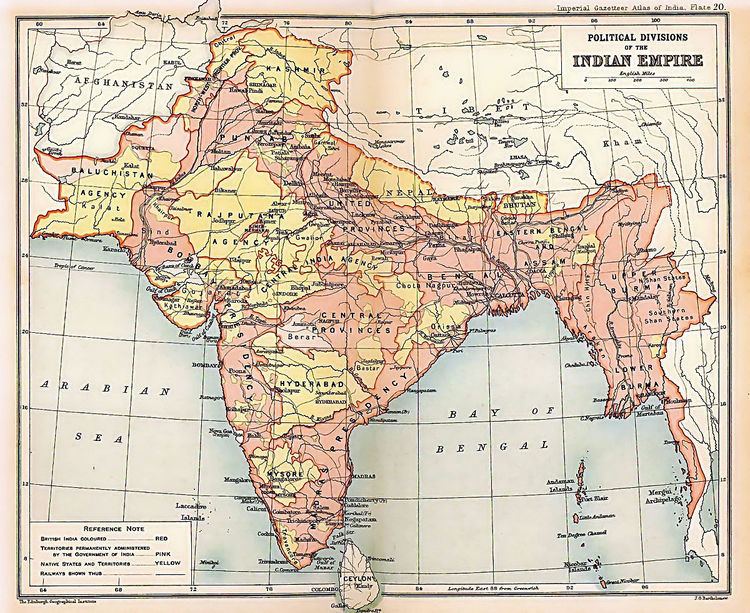 | ||
For postage stamps and postal history of India, see Postage stamps and postal history of India
Contents
The postage stamps and postal history of the Indian Princely States is a complicated subject; British rule was not a uniform exercise of authority, and many states ran their own postal services. These Indian States were independent countries/kingdoms with defined boundaries and political systems. However all the princely states, referred to within this article, were subjugated by war or diplomacy by British India and as such not to be confused with truly independent states in the Indian sub-continent such as Nepal.
Categorisation for postal purposes
The two main categories were the convention states who had agreements with British India regarding mail, and the feudatory states who ran their own posts, and whose stamps were only valid within their borders. The words 'Convention' and 'Feudatory' in this case solely refer to postal arrangements with/in relation to British India.
The convention states
The convention states all used contemporaneous stamps of British India, overprinted with the name of the state, in Latin letters or Hindi/Urdu letters or both, depending on state and period. The convention states were:
Postal union by a state was considered as a sign of greater fealty to the British Empire. Both Faridkot and Jind, as feudatory states, issued their own stamps before they joined the Postal Convention. Faridkot joined on 1 January 1887. Jind joined in July 1885; its stamps from the feudatory period became invalid for postage, but they continued to be used for revenue purposes. The stamps of the convention states all became invalid on 1 January 1951 when they were replaced by the stamps of the Republic of India, valid from 1 January 1950.
The stamps of convention states are rich in varieties and errors. Typical errors include inverted overprinting, spelling mistakes in English or Devanagri, errors of omission and smaller capital letters.
The practice of overprinting was referred to as "surcharging" though in most cases the monetary value of the postage stamp was never altered.
The feudatory states
India had a great many feudatory states, but not all issued postal stamps and/or stationery. The feudatory states issuing stamps were as follows (the dates are the starting and ending dates of stamp issuance):
Since many of the first issues of these stamp issuing states were printed locally, using primitive methods (generally typographed), they can be very rare. For this reason, the Indian Feudatory States are a challenging and an interesting area for stamp collecting. Beginners need be aware of the existence of forgeries, though most forgeries are crude and can be easily identified. Postal history forgeries (i.e. stamps used on cover/piece) are at times harder to detect - though this problem is not limited to Indian States. It is generally recommended to request expertization certificates from the British Philatelic Association or the Royal Philatelic Society London.
The standard catalogue for postage stamps followed by many (and one that is considered most accurate for Indian States) is published by Stanley Gibbons. A wealth of information resides in articles that have been published in journals like the Philatelic Journal Of India, the India Post (published by the India Study Circle), the London Philatelist (published by the Royal Philatelic Society London), and others that are available at many of the philatelic libraries (List of philatelic libraries).
Due to the very basic nature of the printing and design, stamps of the feudatory states are often informally referred to as "Uglies".
